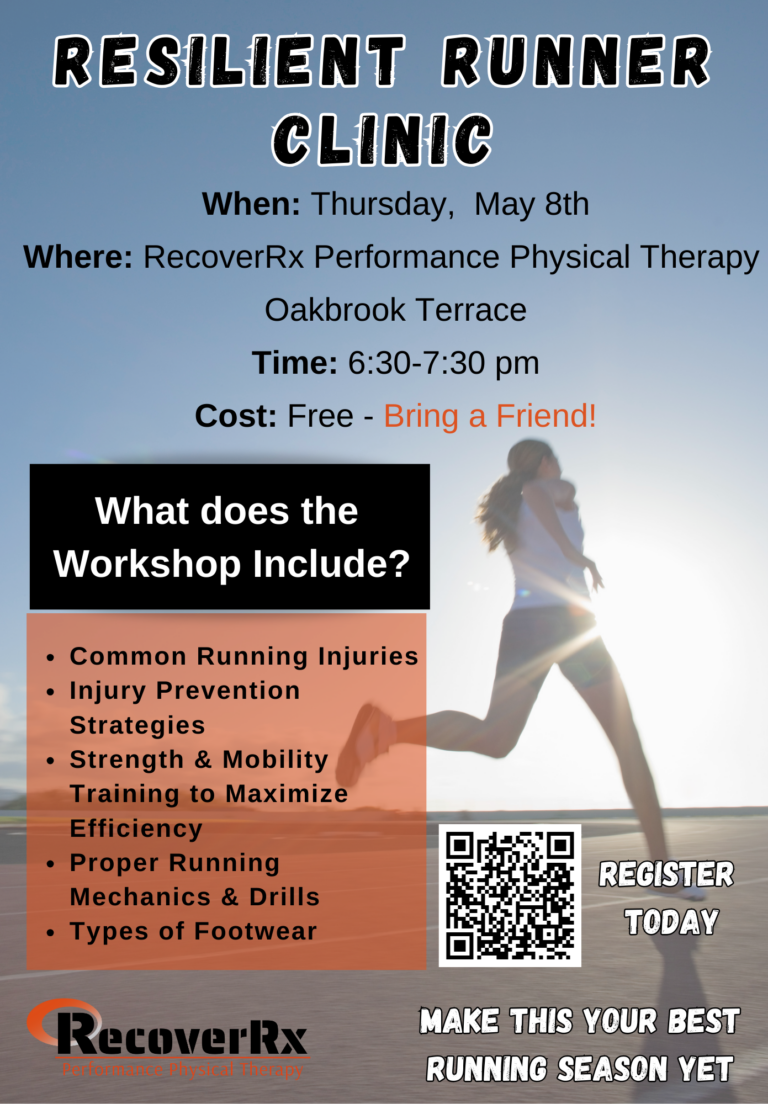
The shoulder is one of the most versatile joints in the human body, allowing for a wide range of motion. However, this flexibility also makes it susceptible to injuries, particularly sprains and strains. These painful injuries can significantly impact your daily activities and quality of life. Understanding the causes, symptoms, and treatment options for shoulder sprains and strains is crucial for effective recovery and prevention.
Each year, millions of people of all ages visit the doctor for shoulder problems, including sprains and strains. Shoulder pain is a common complaint, with point prevalence and lifetime estimates as high as 26% and 67%, respectively. Whether you’re an athlete, a fitness enthusiast, or someone dealing with the wear and tear of everyday life, knowing how to manage and treat these injuries is essential. If you’re experiencing shoulder pain, physical therapy Oakbrook Terrace at RecoverRx can help you regain mobility and strength.
Anatomy of the Shoulder
The shoulder is a complex joint made up of three bones: the humerus (upper arm bone), the scapula (shoulder blade), and the clavicle (collarbone). These bones are connected by a network of ligaments, tendons, and muscles that work together to provide stability and movement. The rotator cuff, a group of four muscles and their tendons plays a vital role in maintaining shoulder stability and enabling a wide range of motion.
The shoulder joint’s unique structure allows for extensive movement but also makes it vulnerable to injuries, particularly when subjected to excessive force or repetitive strain. Understanding the shoulder’s anatomy is crucial in recognizing how sprains and strains occur and why they require specific treatments.
What Are Shoulder Sprains and Strains?
A sprained shoulder involves the stretching or tearing the bands of tissue—the tough ligaments that connect bones at the joint. On the other hand, a shoulder strain refers to the stretching or tearing of muscles or tendons—the tissues that connect muscles to bone. Sprains and strains can range from mild to severe, depending on the extent of the damage.
Causes of Shoulder Sprains and Strains
Shoulder sprains and strains can occur due to a variety of factors. Acute injuries, such as falls, direct impacts, or awkward movements, can rapidly overstretch or tear the shoulder’s ligaments or muscles. Additionally, overuse injuries often arise from repetitive movement during throwing, swimming, or lifting activities, which can gradually wear down the shoulder tissues. Poor posture, especially over long periods, can place unnecessary stress on the shoulder muscles and ligaments, leading to injury. Finally, weakness in the muscles surrounding the shoulder can increase the likelihood of sprains and strains, making the joint more vulnerable to damage.
Risk Factors
Several factors can heighten the risk of injury from shoulder sprains and strains. Firstly, age plays a significant role, as muscles and ligaments lose elasticity and strength over time, making them more susceptible to injury. Additionally, individuals participating in sports or activities involving repetitive shoulder movements are at an increased risk. A history of previous shoulder injuries can also weaken the joint, resulting in a higher likelihood of future sprains and strains. Finally, inadequate conditioning and a lack of strength training can leave the shoulder unprotected and vulnerable to damage.
Symptoms of Shoulder Sprains and Strains
Identifying sprained shoulder symptoms is crucial for ensuring timely treatment. Common indicators include varying degrees of pain—ranging from sharp to dull aches—especially during arm movement. Additionally, you may notice swelling and inflammation around the shoulder joint, along with bruising from internal bleeding caused by torn tissues. A limited range of motion can make it difficult to move or lift the arm, and you may also experience noticeable muscle weakness. If you encounter any of these symptoms, particularly after an injury or due to overexertion, it’s important to consult a healthcare professional to avoid exacerbating the condition.
Shoulder Sprains and Strains Grades

Shoulder sprains and strains are classified into three grades, each representing varying levels of severity. These grades help determine the appropriate treatment and recovery plan for the individual.
Grade 1
A Grade 1 injury is mild, involving stretching or slight tearing of the ligaments or muscles. Symptoms may include mild pain, slight swelling, and a minor decrease in strength and range of motion. Recovery typically involves rest and conservative treatment.
Grade 2
A Grade 2 injury is moderate, with a partial tear of the ligaments or muscles. Symptoms include significant pain, noticeable swelling, bruising, and reduced shoulder function. Treatment may involve a longer period of rest, physical therapy, and, in some cases, immobilization with a sling.
Grade 3
A Grade 3 injury is severe, with a complete tear of the ligaments or muscles. This level of injury often causes intense pain, significant swelling, and severe limitation in shoulder movement. Surgery may be required to repair the torn tissues, followed by extensive rehabilitation.
Diagnosis of Shoulder Sprains and Strains
Accurate diagnosis is essential for effective treatment. Here’s how healthcare professionals typically diagnose shoulder sprains and strains:
Medical History
Your doctor will begin by asking about your medical history, including any previous shoulder injuries, the onset of symptoms, and the activities that may have caused the injury. Understanding your history helps identify the underlying cause of your shoulder pain.
Physical Exam
A physical examination involves assessing the shoulder’s range of motion, strength, and stability. The doctor may ask you to move your arm differently to determine which movements cause pain. They may also palpate the shoulder to check for tenderness or swelling.
Imaging Tests
Imaging tests, such as X-rays or MRI scans, may be conducted to provide a clearer view of the shoulder’s internal structures. These tests help identify the extent of the injury and rule out any associated fractures or other complications.
- X-rays: X-rays help eliminate the possibility of fractures or dislocations in the shoulder bones. These imaging tests provide crucial information for an accurate diagnosis.
- Ultrasound: Ultrasound imaging effectively visualizes soft tissues, including muscles and tendons, to identify any tears or inflammation. This non-invasive technique plays a crucial role in diagnosing shoulder-related injuries.
- MRI: Magnetic Resonance Imaging (MRI) offers highly detailed visuals of the soft tissues in the shoulder. This advanced imaging enables a more accurate assessment of the injury’s severity and extent.
Treatment Options for Shoulder Sprains and Strains
Treatment for shoulder sprains and strains varies depending on the severity of the injury. Here are the common treatment options:
At-Home Care
In mild cases, home care typically provides adequate support for healing. Simple measures can effectively alleviate symptoms and promote recovery.
- RICE (Rest, Ice, Compression, Elevation): Taking a break from activities that stress the shoulder and applying ice packs can significantly alleviate pain and swelling. Employing compression bandages and elevating the arm also contributes to the healing process.
- Over-the-counter pain medications: Over-the-counter pain relievers such as ibuprofen or acetaminophen reduce pain and inflammation. These medications can relieve and support the healing process for shoulder sprains and strains.
- Wearing a sling or brace: Using a sling or brace to immobilize the shoulder helps prevent additional strain while facilitating tissue healing. This protective measure is crucial for ensuring a smoother recovery process.
Physical Therapy
Recover physical therapy is a cornerstone of treatment for shoulder sprains and strains. A qualified physical therapist can design a customized exercise program to restore strength, flexibility, and range of motion in the shoulder. At RecoverRx Physical Therapy, our team specializes in helping patients recover from shoulder injuries with tailored rehabilitation plans.
Surgery (Severe Cases)
In severe cases, especially with Grade 3 injuries, surgery may be necessary to repair torn ligaments or muscles. Physical therapy is essential to restore shoulder function and prevent future injuries post-surgery.
Prevention Strategy to Avoid Shoulder Sprains and Strains
To prevent shoulder sprains and strains, it’s essential to incorporate a few key practices into your routine. First, engage in strengthening exercises focusing on the shoulder muscles, particularly the rotator cuff, to enhance stability and support. Always remember to perform a proper warm-up before participating in any activity that utilizes the shoulder, as this prepares the muscles for exertion. Additionally, maintaining good posture when sitting or standing for extended periods helps reduce unnecessary strain on the shoulder. Lastly, be mindful of repetitive shoulder movements; regular breaks can help alleviate the risk of overuse injuries.
When to Seek Medical Help?

It is important to seek medical assistance if you experience severe shoulder pain or swelling, notice any visible deformity, or feel instability in the shoulder. Additionally, suppose your symptoms worsen despite trying at-home care, or you have difficulty moving your shoulder or arm. In that case, it is crucial to consult a healthcare professional for a thorough evaluation and appropriate treatment.
Relieve Shoulder Pain with RecoverRx Physical Therapy
At RecoverRx Physical Therapy, we understand the impact shoulder injuries can have on your life. Our team of skilled physical therapists in Oakbrook Terrace is dedicated to helping you regain your strength and mobility. We offer personalized treatment plans to address your needs and guide you through every recovery step.
Conclusion
Shoulder sprains and strains are common injuries that can significantly affect your daily life. By understanding their causes, symptoms, and treatment options, you can take proactive steps to manage and prevent these injuries. Remember, early diagnosis and treatment are key to a successful recovery. If you’re dealing with a painful shoulder, don’t hesitate to seek professional help.
FAQs
How long does a shoulder strain take to heal?
The healing time for a shoulder strain depends on the severity of the injury. Mild strains may heal within a few weeks, while more severe strains can take several months to recover fully.
How do I know if my shoulder is torn or strained?
A torn shoulder typically causes more severe pain, swelling, and limited movement than a strain. An MRI or ultrasound can provide a definitive diagnosis.
Is it a shoulder sprain or strain?
A shoulder sprain involves ligaments, while a strain involves muscles or tendons. Both injuries have similar symptoms, but a healthcare provider can determine the exact nature of the injury through a physical exam and imaging tests.




